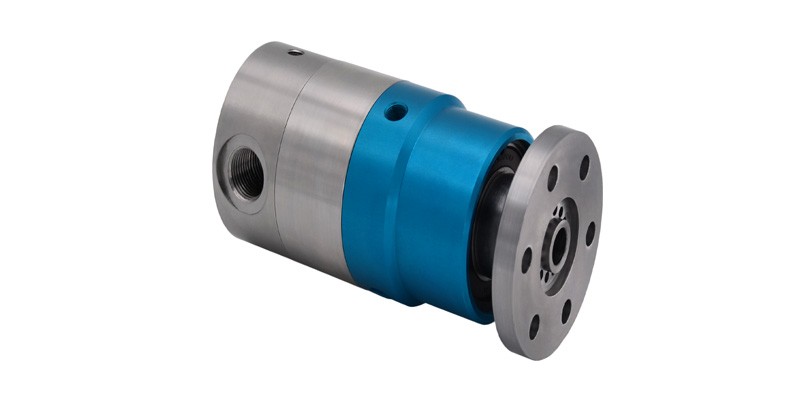This article aims to demystify pneumatic slip rings, providing a detailed look at their design, operation, applications, user concerns, and recent advancements. Novices and experts alike will find valuable insights into this essential component in various industries.
Introduction to Pneumatic Slip Rings
Understanding Pneumatic Slip Rings: Definition, Purpose, and Working Principle
Pneumatic slip rings, integral components in the seamless operation of rotating machinery, are designed to transmit air or gases while allowing for continuous rotation between a stationary structure and a rotating platform. Essentially acting as a bridge, these devices ensure that there is no interruption in the flow of pneumatic energy between the stationary and moving parts. The core purpose of a pneumatic slip ring is to provide a reliable and efficient method of preserving the continuous flow of gases or fluids, eliminating the need for cumbersome hoses or tubes that could hinder the machinery’s range of motion or operational efficiency.
The basic working principle behind pneumatic slip rings involves a precisely engineered assembly of seals and passages or ports. These components work in harmony to form a leak-proof path for air or gas to move from a stationary input source to a rotating output destination. As the system operates, the stationary part of the slip ring, often referred to as the stator, remains fixed while the rotating part, or rotor, spins in unison with the machinery’s moving elements. This arrangement allows for the uninterrupted transfer of pneumatic or fluid power through the slip ring, regardless of the rotation or movement of the attached machinery.
The Wide-Ranging Applications and Significance of Pneumatic Slip Rings in Various Industries
The versatility and functionality of pneumatic slip rings have made them indispensable across a broad spectrum of industries. In the manufacturing sector, they play a vital role in automated assembly lines and packaging machinery, where the continuous rotation of parts requires the constant transfer of air or gases to operate pneumatically controlled instruments or to maintain pressure systems. The significance of pneumatic slip rings extends to the realm of medical technology, particularly in advanced imaging equipment like CT scanners, which rely on slip rings to maintain the flow of coolant gases while rotating around a patient.
Furthermore, the energy sector benefits significantly from the application of pneumatic slip rings, with wind turbines standing as a prime example. In these applications, slip rings ensure the transfer of hydraulic power or data signals between the nacelle and the blade pitch control mechanisms, facilitating optimal blade orientation and efficiency. The aerospace industry also utilizes pneumatic slip rings in various capacities, including in the design of satellite communication systems that require the rotation of antennae to maintain alignment with communication satellites.
The diverse applications underscore the crucial role that pneumatic slip rings play in modern industry. Not only do they enhance the operational capabilities of rotating machinery, but they also contribute to advancements in technology and efficiency across multiple fields. By providing a reliable solution for the transfer of pneumatic power or signals in rotary applications, pneumatic slip rings have become foundational components, pivotal to innovation and progress in contemporary industry.
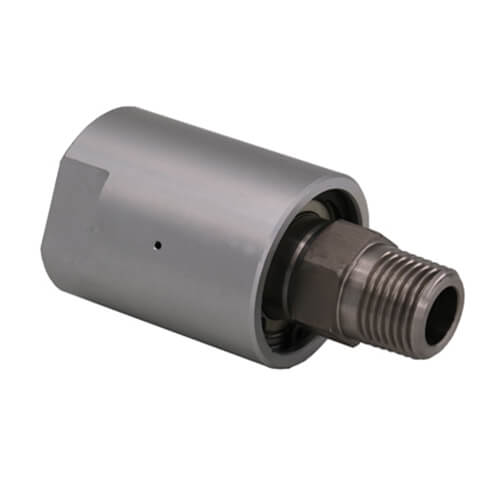
Understanding Pneumatic Slip Rings
Design and Components
The design of pneumatic slip rings is a marvel of engineering precision, integrating various components to facilitate the unimpeded transfer of gases or fluids between stationary and rotating parts. Central to their construction are the seals and ports which ensure that the system remains leak-proof while in operation. These components are encased within a robust housing, typically manufactured from materials such as aluminum, stainless steel, or engineered plastics, chosen for their durability and compatibility with the media being transferred.
Seals play a pivotal role in maintaining the integrity of the pneumatic slip ring, preventing the escape of gases or fluids. They are often made from specialized materials such as PTFE (Polytetrafluoroethylene) or NBR (Nitrile Butadiene Rubber), selected for their wear resistance and ability to provide a tight seal against the pressures encountered.
Ports, on the other hand, serve as the entry and exit points for the media. The design and number of ports can vary significantly depending on the application’s requirements, affecting the slip ring’s capacity for fluid or gas transfer. The precise arrangement of these ports ensures the optimal path for media flow, eliminating turbulence and minimizing resistance.
These components are assembled with a focus on achieving seamless integration with the machinery they support, ensuring that the pneumatic slip ring does not introduce undue complexity or maintenance demands.
Types and Variations
Pneumatic slip rings come in a diverse array of types and variations, each tailored to meet the specific requirements of different applications. This variety allows for a wide range of functionality, spanning from simple single-channel designs to complex multi-channel configurations that can handle different types of media simultaneously.
Single-channel slip Rings are the simplest form, designed to transfer a single type of gas or fluid. Their simplicity makes them ideal for applications where minimal media transfer is needed, such as in small packaging machines or for air cooling in electronic devices.
Multi-Channel Slip Rings represent a more advanced class, capable of transferring multiple types of media simultaneously without cross-contamination. This feature is crucial in complex machinery such as in medical devices, where separate channels may be needed for different gases or a combination of power and signal transfer.
Furthermore, specific variations have been developed to cater to unique operational challenges. For instance, Low-Leakage Slip Rings are designed with enhanced seal technology to minimize leakage, a critical requirement in sensitive environments such as pharmaceutical manufacturing or food processing. High-Speed Slip Rings, on the other hand, are engineered to withstand the stresses associated with rapid rotation, common in centrifugal processes and high-speed machining operations.
Another fascinating innovation is the Integrated Pneumatic and Electrical Slip Rings. These combine traditional electrical slip ring functions with pneumatic channels, allowing for both electrical power/signal and fluid/gas transfer through a single, integrated unit. This combination is especially beneficial in space-constrained applications where separate slip rings for electrical and pneumatic transfers would be impractical, such as in compact robotic arms or rotating cameras.
Each type of pneumatic slip ring offers distinct advantages, making the selection a critical process that hinges on understanding the specific needs of the application. The variety in types and designs underscores the versatility of pneumatic slip rings, making them indispensable in a wide range of industrial applications.
Applications of Pneumatic Slip Rings
Industrial Uses
In the industrial sphere, pneumatic slip rings are ingrained in a multitude of applications, providing seamless pneumatic or fluid transfer in rotating, sliding, or oscillating systems. From manufacturing assembly lines to robotics, their role in maintaining continuous flow and functionality is critical.
Rotary Tables prominently feature pneumatic slip rings in their structure. Whether in manufacturing process machines or test equipment, rotary tables require precise rotation and a constant flow of gases or fluids to equipment on the table. Pneumatic slip rings effectively bridge the pneumatic connection between the stationary infrastructure and the rotating table, enhancing operational efficiency.
In packaging machinery, pneumatic slip rings are essential for the automation of processes like filling, sealing, and labeling. The slip rings allow these machines to continuously rotate or slide while maintaining the pressurized air supply critical for actuating mechanisms, sensors, and pneumatic device controls.
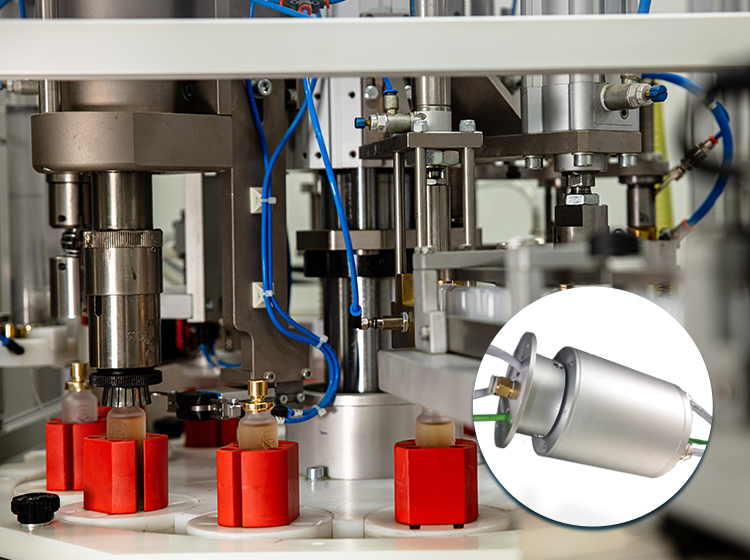
The advent of automation has significantly increased the demand for pneumatic slip rings. Within advanced automated equipment, these devices offer reliable pneumatic energy transfer between stationary and rotating or moving parts. This extends from conveyor systems and pick-and-place robots to automated testing machinery, reinforcing the continuity and accuracy of operations.
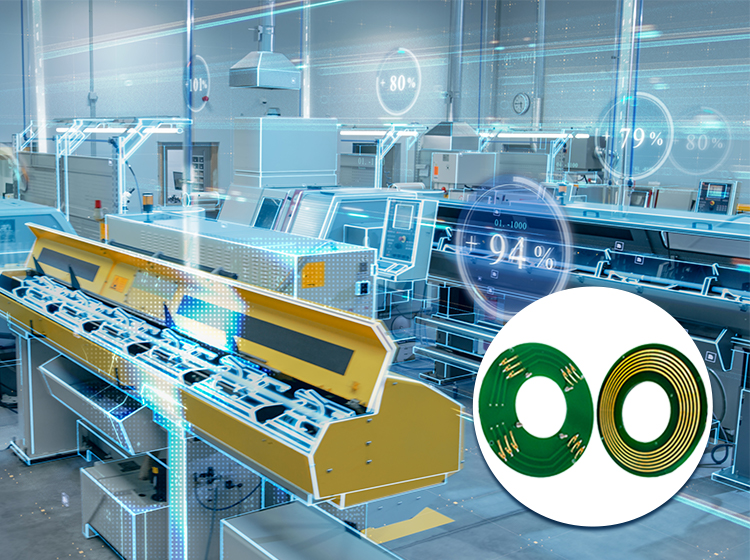
Specialized Applications
Beyond generic industrial applications, pneumatic slip rings find use in more specialized areas, underlining their adaptability and versatility.
In the medical field, pneumatic slip rings occupy a crucial role. Computed Tomography (CT) scanners specifically use these devices for coolant gas flow during the device’s rotational movements. Notably, in providing separate air, vacuum, and cooling channels, multi-channel slip rings ensure the scanner’s continual operation while preventing cross-contamination of various media.
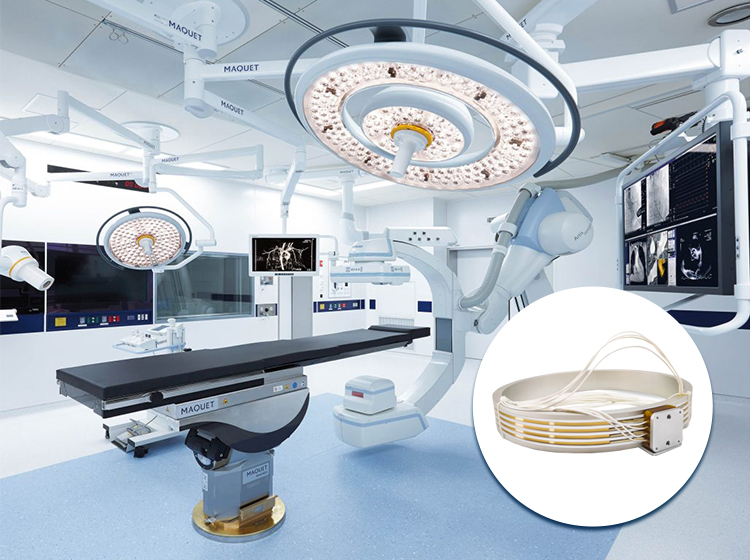
Wind turbines also take advantage of pneumatic slip rings, particularly in blade pitch control systems. These systems adjust the angle of wind turbine blades for optimal wind capture and power production. As the nacelle rotates to face the wind, the pneumatic slip ring ensures continuous hydraulic power and signal transmission to and from the pitch control system.
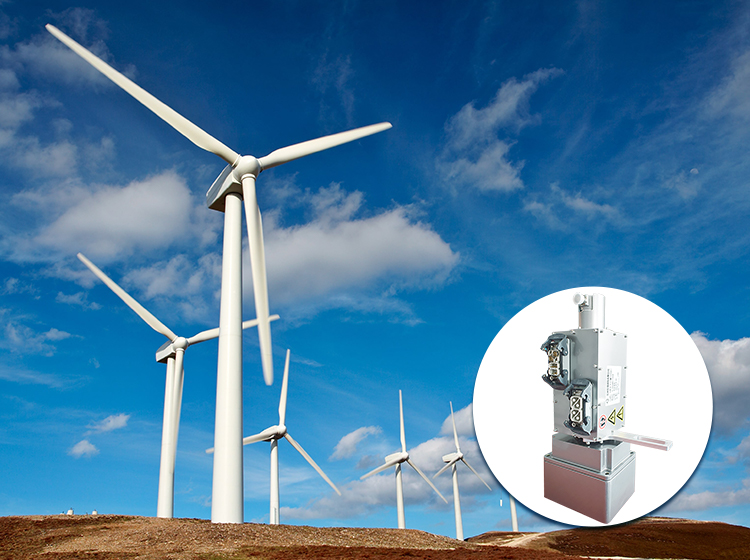
The aerospace industry harnesses the capabilities of pneumatic slip rings in various applications. Satellite antennae, for instance, require continuous rotation to maintain strategic orientations. During these rotations, slip rings ensure uninterrupted data, signal, and power transmission. Similarly, in aircraft wing-design testing, pneumatic slip rings enable constant airflow for simulating actual flight conditions.

These specialized applications reflect the broad-based utility of pneumatic slip rings. From industrial processes to high-tech equipment, their role in facilitating uninterrupted flows of either air or fluid proves essential, ultimately enhancing efficiency, continuity, and precision of operations.
Pneumatic Slip Rings: Key Features and Specifications
Throughput Capacity
The throughput capacity of pneumatic slip rings, determined by flow rate and pressure handling capabilities, is fundamental to their performance and range of application. The flow rate—the volume of air or fluid that can be passed through the slip ring in a given time—must align with the operational demands of the machinery it supports. Higher flow rates are often necessary for systems requiring rapid transfer of large volumes of air or fluid, such as in high-speed packaging machines or the coolant systems of MRI scanners, ensuring they function at peak efficiency without overheating or pressure drops.
Pressure handling capabilities are equally crucial, dictating the maximum pressure the slip ring can withstand without leakage or damage. This specification needs to meet or exceed the maximum operational pressures of the system to maintain integrity and reliability. In applications like aerospace or deep-sea exploration equipment, where equipment may be subjected to extraordinarily high pressures, slip rings with superior pressure resistance are indispensable to prevent critical failures.
Size and Integration
The size and integration ease of pneumatic slip rings are critical factors, particularly in applications where space is at a premium or complex systems integration is required. The physical dimensions of the slip ring must be compact enough to fit within the constraints of the machinery design, without compromising on its capacity to transfer air or fluids efficiently. In robotic arms, for example, a compact slip ring allows for greater freedom of movement, while in medical devices, size constraints might dictate the feasibility of incorporating the slip ring altogether.
Ease of integration pertains to how simply a slip ring can be installed and connected to existing systems. This involves considerations such as the compatibility of port connections with other components, the adaptability of the slip ring to various operational environments, and the provision of features such as plug-and-play connectivity. Successful integration ensures that the slip ring functions as an integral part of the machinery, enhancing overall system performance rather than being a potential bottleneck or source of reliability issues.
Durability and Maintenance
Durability and maintenance requirements are fundamental specifications that impact the lifecycle cost and reliability of pneumatic slip rings. The expected lifespan of a slip ring is a key consideration, influenced by design quality, materials used, and operational conditions. Industries with harsh operational environments, like mining or marine applications, require slip rings built to withstand extreme conditions, including dust, moisture, and temperature fluctuations, without degradation in performance.
Maintenance requirements are intertwined with the design and material choices of the slip ring. Some slip rings are designed to be virtually maintenance-free, utilizing wear-resistant materials and self-lubricating seals to extend lifetimes and minimize downtime. However, regular inspection and maintenance may still be necessary for certain applications to ensure optimal performance and to identify wear and tear before it leads to failure. Factors affecting wear and tear include the operational speed, alignment accuracy between rotating and stationary parts, and the corrosiveness or abrasiveness of the fluids or gases being transferred.
In summary, understanding and specifying the correct throughput capacity, size, and ease of integration, as well as durability and maintenance expectations, are crucial for selecting the appropriate pneumatic slip ring for any given application. These specifications directly influence the functionality, reliability, and overall effectiveness of pneumatic slip rings in their myriad uses across industries.
Pneumatic Slip Rings: User Concerns and Considerations
Selecting the Right Slip Ring
When selecting a pneumatic slip ring, it’s critical to consider several key factors to ensure compatibility with the intended application. One fundamental element is media compatibility. The slip ring must be able to handle the specific gas or fluid to be transferred, with the seals and housing materials selected to tolerate any chemical properties of the media, such as corrosiveness or abrasiveness.
Environmental conditions also significantly impact the choice of slip ring. In environments subject to extreme temperatures, high humidity, dust, or corrosive elements, slip rings engineered to resist such conditions will guarantee longer service life and less downtime.
Finally, another crucial factor is rotation speed. Slip rings employed in high-speed operations should be designed to withstand the increased wear and stress produced by rapid rotation. This includes features such as low-friction sealing systems, high-quality bearings, and specialized materials to resist centrifugal forces.
Installation Challenges
Successful installation is crucial for a pneumatic slip ring’s functionality and longevity. Common challenges include aligning the stationary and rotating sections correctly to prevent premature wear and ensuring the slip ring is sufficiently secured to prevent movement during operation.
To alleviate these challenges, users should follow the manufacturer’s installation guide closely and use any provided installation kits or tools. Furthermore, it’s key to ensure that the slip ring’s ports are correctly connected to both the rotating and stationary interfaces and that any electrical connections (if applicable) are carried out safely and correctly.
Reliability and Leakage Issues
The reliability of a pneumatic slip ring is often measured by its mean time between failures (MTBF) – a guided estimate of the time elapsed between one failure and the next; the longer, the better.
One common concern when operating pneumatic slip rings is leakage. A leak can compromise the operation of the entire system by reducing pressure or causing cross-contamination between media. Therefore, high-quality seals and regular checks are required to minimize this risk. Additionally, users should consider slip rings with features designed to reduce leakage, such as enhanced sealing technologies or pressure balancing designs.
It’s also crucial to document and track any recurring issues or leaks, as these records can help identify patterns or weaknesses in the system, thus aiding in maintenance or future system upgrades.
Cost and ROI
The initial cost of pneumatic slip rings can vary greatly depending on their complexity, materials, and the manufacturer’s prestige. However, it’s essential to consider the total cost of ownership, which includes aspects like installation, maintenance, and potential downtime costs.
When considering the return on investment (ROI), factors such as increased operational efficiency, reduced downtime, and prolonged equipment life should be evaluated. For instance, in high-stakes applications like medical machinery or wind turbines, the cost of a system failure can far outweigh the initial investment in a high-quality, reliable pneumatic slip ring.
In summary, users need to carefully consider multiple factors when selecting, installing, and operating pneumatic slip rings. From environmental conditions and media compatibility to installation challenges, potential leakage issues, and cost considerations, each aspect plays a crucial role in ensuring optimal performance and maximum ROI.
Pneumatic Slip Rings: Technological Advancements
Innovations in Design and Materials
Modern technological advancements have brought forth various improvements in the design and material composition of pneumatic slip rings, dramatically enhancing their performance, reducing potential leakage, and boosting their durability.
One major upgrade is the development of advanced sealing technologies. By incorporating high-performance polymers and making use of advanced manufacturing techniques, manufacturers have been able to design seals that ensure minimal leakage and offer an extended operational lifespan, even in high-pressure situations or when transferring abrasive or corrosive media.
Additionally, novel materials, such as ceramic and carbon materials, have found their way into pneumatic slip ring designs. These materials offer superior wear resistance and heat dispersion characteristics, expanding the life expectancy of the slip rings and allowing for their use in more demanding industrial operations.
Significant progress has also been made on the modular design front. Modern pneumatic slip rings now leverage modular designs for better flexibility, allowing for customization of the number of channels and the type of media that can be conveyed. This flexibility accommodates a broader spectrum of applications and permits easier system upgrades or modifications, improving the adaptability of these slip rings in evolving industrial systems.
Trends in Miniaturization and Efficiency
Recent trends in the industry have seen a move towards smaller, more efficient pneumatic slip ring designs. The push towards miniaturization comes as industries increasingly require compact devices that deliver high performance in smaller, more intricate machinery. Advances in manufacturing technologies have enabled the production of smaller, lighter slip rings without compromising on their throughput capacity, enabling their integration into a vast array of more compact applications, from surgical robotics to drones.
Simultaneously, there is a significant emphasis on enhancing the efficiency of pneumatic slip rings. Modern design innovations have focused on reducing air consumption while maintaining or improving the flow rate, thereby optimizing the energy use of the entire system. These technological trends seek to cater to the industry’s growing demand for economically viable and environmentally friendly components in the overall infrastructure of manufacturing processes.
In conclusion, the dynamic evolution of pneumatic slip rings is a testament to the incessant search for improved performance, adaptability, and efficiency in the industry. As technology continues to advance, expect these devices to offer even more, contributing to the rising wave of automation and precision in various applications across industry domains.
Conclusion
Understanding the intricacies of pneumatic slip rings is instrumental in their selection and maintenance regimen, thereby optimizing operational efficiency. As we look to the future, technological advancements and market needs will continue to shape the pneumatic slip ring designs, promising even greater versatility, durability, and efficiency.
FAQs about Pneumatic Slip Rings
Q: What is a pneumatic slip ring?
A: A pneumatic slip ring, sometimes referred to as a rotary union or rotating joint, is a device that allows the transfer of air or fluid from a stationary component to a rotating part within a system. It’s widely used in various industries, from manufacturing equipment to medical devices and aviation.
Q: What factors should I consider when choosing a pneumatic slip ring?
A: Key factors to consider include:
- Media compatibility: The slip ring must be compatible with the gas or fluid it will transfer.
- Operating conditions: The slip ring should be designed to withstand the environmental conditions and operating pressures of the system.
- Rotation speed: The slip ring should match or exceed the operational speed requirements of the equipment.
- Size and integration: Consider whether the slip ring will fit into the space available and how easily it can be integrated into the current system.
Q: What are common challenges during installation?
A: Common challenges include proper alignment of the stationary and rotating parts and securing the slip ring firmly to prevent unnecessary movement. Following the detailed installation guide provided by the manufacturer can help mitigate these issues.
Q: How is the reliability of a pneumatic slip ring measured?
A: Reliability is often measured by the Mean Time Between Failures (MTBF), with a longer time indicating a more reliable device. It is also crucial to monitor for leakage issues, which can indicate wear or alignment problems.
Q: How do technological advancements impact pneumatic slip rings?
A: Advancements in material science and engineering have led to improvements in the performance, leakage resistance, and durability of pneumatic slip rings. Innovations in design have made these devices more compact and efficient, while modular designs allow for customization to fit a wider variety of applications.
Q: What is the ROI of a pneumatic slip ring?
A: The ROI of a pneumatic slip ring varies depending on several factors. These include the initial cost, maintenance cost, and increased efficiency brought by the slip ring to the system. In high-stakes applications, the cost of a system failure can far outweigh the cost of investing in a quality, reliable pneumatic slip ring.
Q: Where can I buy pneumatic slip rings?
A: Pneumatic slip rings can be purchased directly from manufacturers, through distributors, or from various online platforms. It is crucial to ensure that the product comes with a warranty and after-sales support for the best experience.


